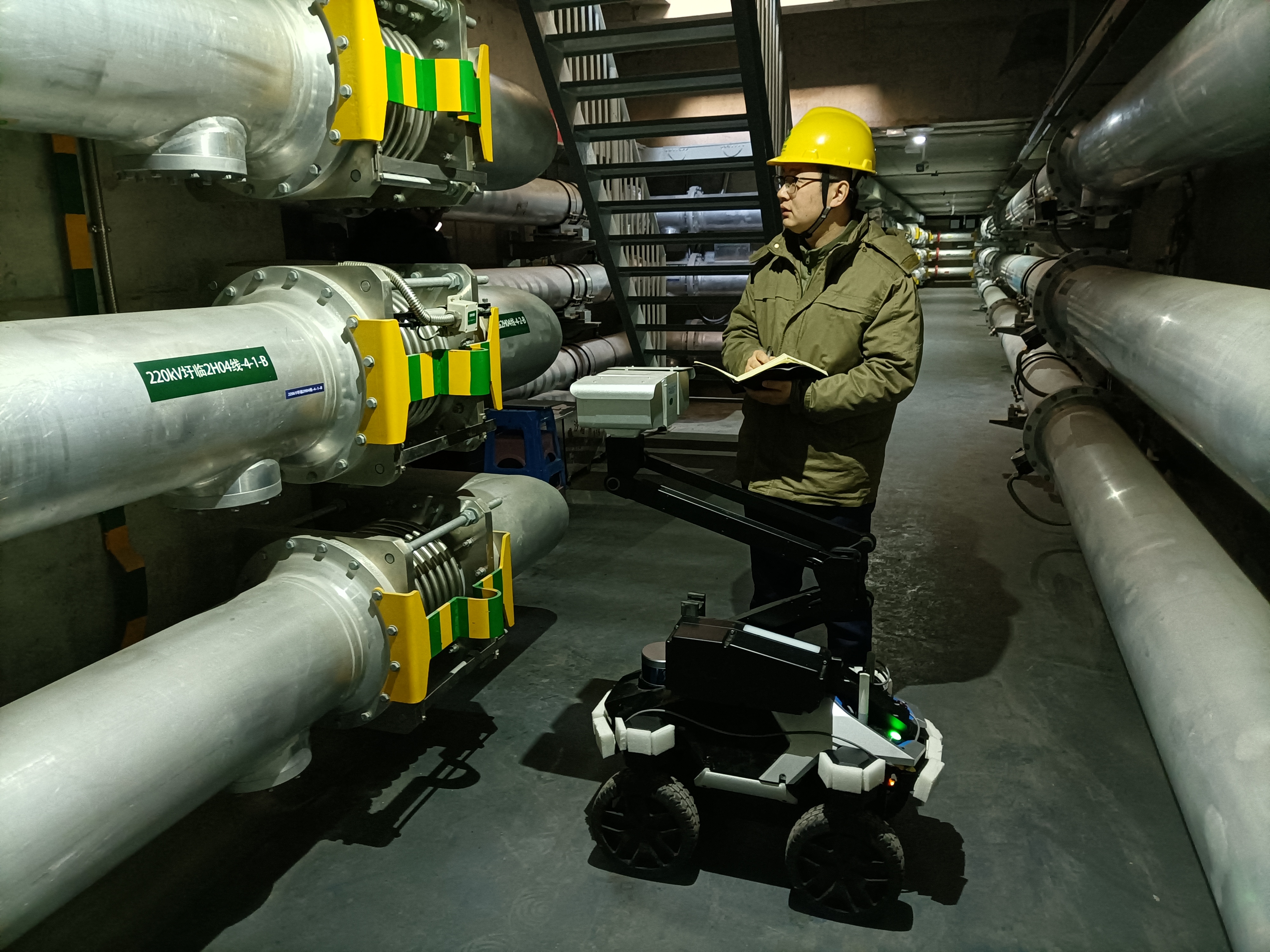By?ZHONG?Jianli?&?JIN?Feng
If you stand on the banks of the Yangtze River in Nantong city in Jiangsu province, you can feel the chilling wind blowing through the city.
Just 500 meters away, a 5.3-kilometer power line — the Nantong Riverside 220 kV gas insulated transmission line (GIL) — has been built underground, supplying approximately eight million kilowatt-hours of electricity to the riverside area each day.
At 8:30 a.m. on January 25, Ge Liangjun, a power line inspector at the State Grid Nantong Power Supply Company, opened the intelligent control system on his computer yet again to check if the parameters were normal for the underground power line.
A string of numbers popped up on the screen, and Ge looked at them intently. After some clicks on the mouse, he relaxed, saying, "Everything is normal."
This has been Ge Liangjun and his colleagues' daily routine for over three years.

Ge Liangjun inspects the underground power line with the smart inspection robot Xiao Hui. (PHOTO: JIN Feng)
The 220 kV GIL, the longest of its kind in China, represented a challenge for safety monitoring after it was installed underground in 2020 so that it would not mar the picturesque landscape along the Yangtze.
Inside the pipeline, there are numerous temperature sensors, displacement monitors, gas pressure gauges and partial discharge monitoring devices. They transmit data in real-time to the intelligent control system, issuing different levels of warnings if there are gas leaks, water seepage or subsidence.
Ge remembered the time when his supervisor Zhou Yang noticed a slight drop in the gas pressure in one of the chambers. Although it had not reached the warning threshold, they immediately went to inspect the site and discovered a leak on a sealed flange, which they promptly sealed.
In late 2022, Ge found himself working with a special new colleague — a smart inspection robot called Xiao Hui. Equipped with a flexible neck, Xiao Hui can take photos of monitoring devices at different heights and generate inspection reports based on the captured images and temperature data. This has greatly improved the efficiency and effectiveness of their work.
The power transmission capacity of the GIL is several times more than that of traditional overhead lines. As Spring Festival approaches, the pressure of inspections has been increasing with the added power load.
"It is essential to ensure that these cable lines have uninterrupted power so that the city functions normally. Being able to ensure a warm winter for the residents in the freezing temperature through our work gives us the greatest satisfaction," Ge said with a smile on his face.
The trio will conduct a series of experiments in fields such as life science, fluid physics, combustion science and materials science. Notably, this is the first time that fruit flies have been taken on a Chinese space mission as experimental subjects. What made scientists choose fruit flies? What experiment will they undergo?
